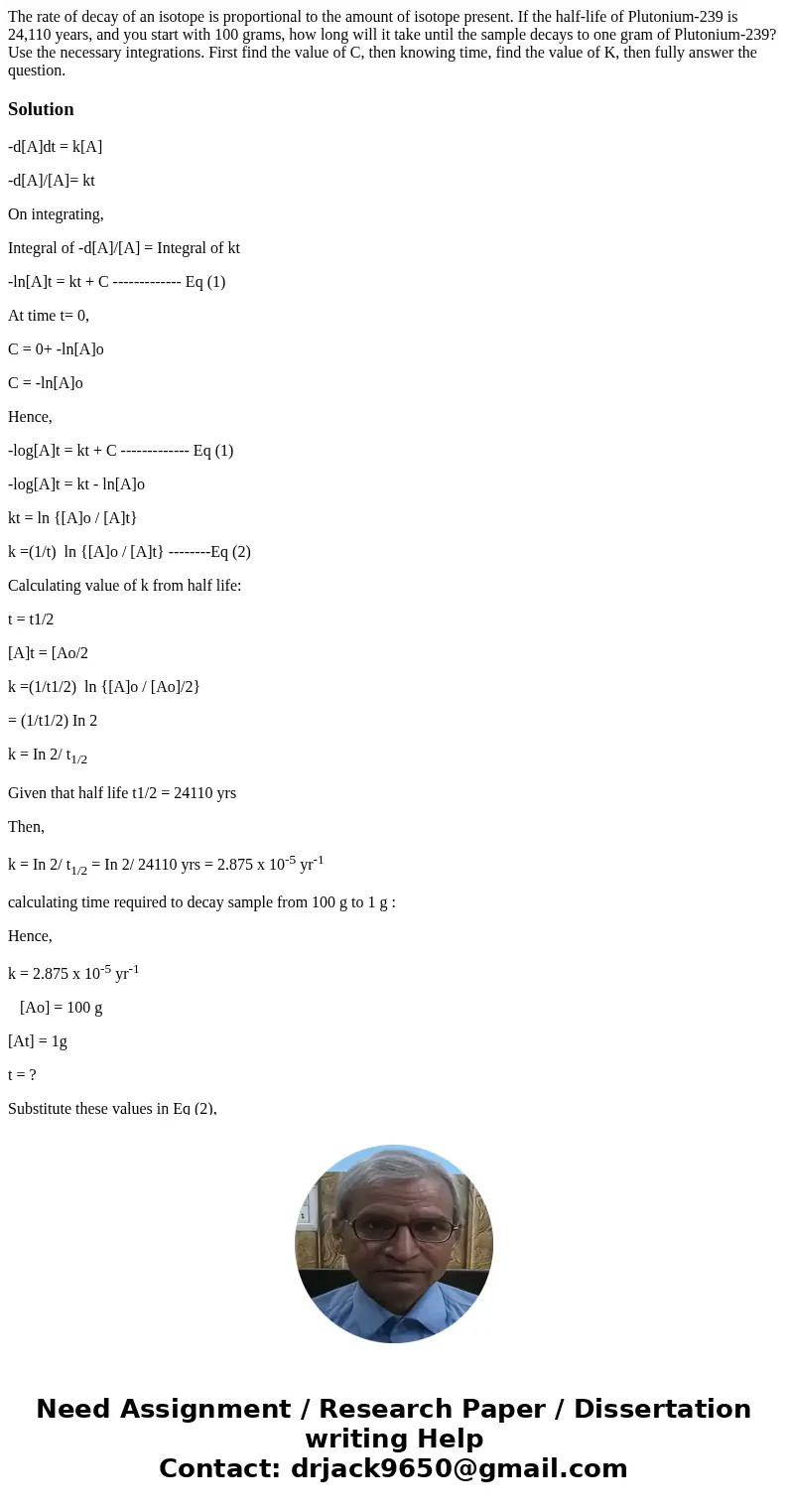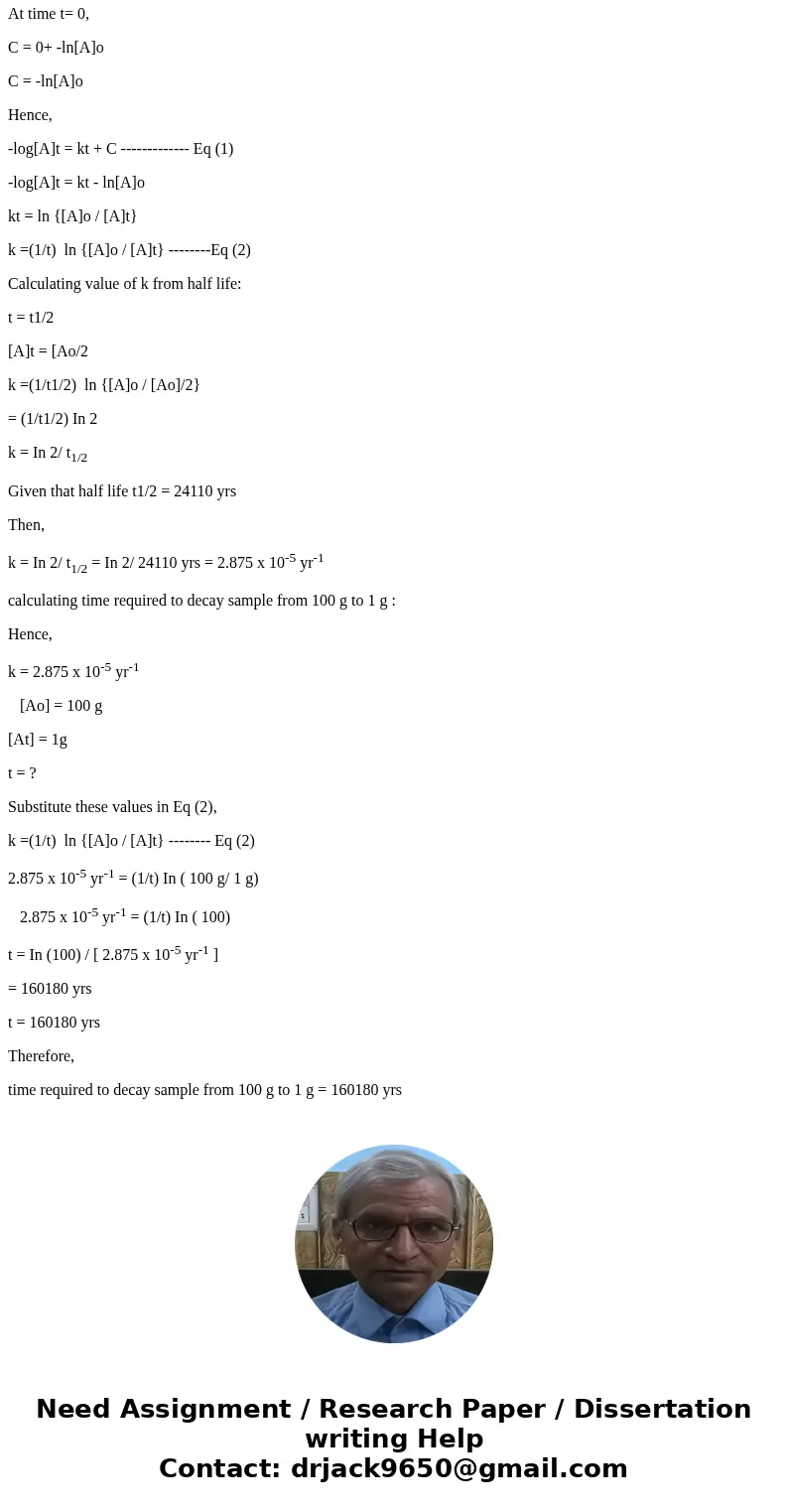The rate of decay of an isotope is proportional to the amoun
Solution
-d[A]dt = k[A]
-d[A]/[A]= kt
On integrating,
Integral of -d[A]/[A] = Integral of kt
-ln[A]t = kt + C ------------- Eq (1)
At time t= 0,
C = 0+ -ln[A]o
C = -ln[A]o
Hence,
-log[A]t = kt + C ------------- Eq (1)
-log[A]t = kt - ln[A]o
kt = ln {[A]o / [A]t}
k =(1/t) ln {[A]o / [A]t} --------Eq (2)
Calculating value of k from half life:
t = t1/2
[A]t = [Ao/2
k =(1/t1/2) ln {[A]o / [Ao]/2}
= (1/t1/2) In 2
k = In 2/ t1/2
Given that half life t1/2 = 24110 yrs
Then,
k = In 2/ t1/2 = In 2/ 24110 yrs = 2.875 x 10-5 yr-1
calculating time required to decay sample from 100 g to 1 g :
Hence,
k = 2.875 x 10-5 yr-1
[Ao] = 100 g
[At] = 1g
t = ?
Substitute these values in Eq (2),
k =(1/t) ln {[A]o / [A]t} -------- Eq (2)
2.875 x 10-5 yr-1 = (1/t) In ( 100 g/ 1 g)
2.875 x 10-5 yr-1 = (1/t) In ( 100)
t = In (100) / [ 2.875 x 10-5 yr-1 ]
= 160180 yrs
t = 160180 yrs
Therefore,
time required to decay sample from 100 g to 1 g = 160180 yrs


 Homework Sourse
Homework Sourse